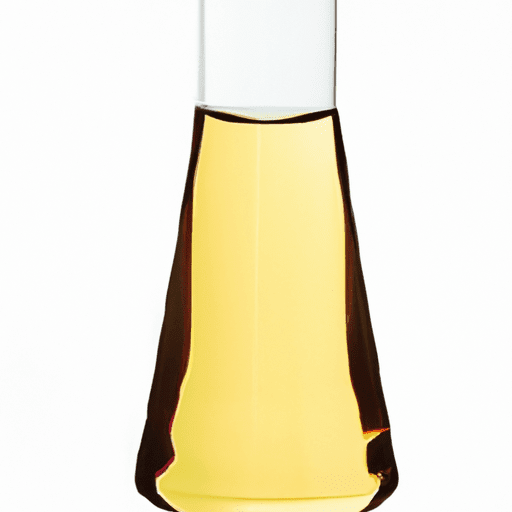The Delicate and Versatile White Balsamic Vinegar
Vinegar is a staple in every kitchen, but have you ever tried white balsamic vinegar? This lesser-known sibling of the classic dark balsamic vinegar offers a delicate and versatile flavor that pairs perfectly with a variety of dishes. In this blog post, we’ll explore the taste profile, common uses, nutritional value, and interesting facts about white balsamic vinegar.
Taste Profile
Unlike its dark counterpart, white balsamic vinegar has a lighter and subtler flavor. It is made from Trebbiano grapes, which are primarily grown in Italy. The vinegar is aged in wooden barrels, where it develops a mild acidity and tanginess. White balsamic vinegar is slightly fruity, with hints of sweetness and a gentle tartness that adds a refreshing note to your culinary creations.
Common Uses in Cooking
White balsamic vinegar’s versatility makes it a fantastic addition to various dishes and dressings. Its delicate flavor does not overpower other ingredients, allowing it to enhance the overall taste of a dish. Here are some popular ways to use white balsamic vinegar in your cooking:
Salad Dressings: Create light and zesty dressings by combining white balsamic vinegar with olive oil, Dijon mustard, and herbs. Drizzle this dressing over fresh greens or use it as a marinade for grilled vegetables.
Marinades: The gentle acidity of white balsamic vinegar tenderizes meat, making it an excellent addition to marinades. Create a flavorful marinade by combining white balsamic vinegar with garlic, herbs, and a touch of honey or maple syrup.
Sauces and Reductions: Add depth and complexity to your sauces and reductions with a splash of white balsamic vinegar. It pairs brilliantly with seafood, chicken, and light pasta dishes.
Fruit and Cheese Pairings: White balsamic vinegar complements the natural sweetness of fruits, making it an exceptional addition to fruit salads or drizzled over ripe strawberries. It also pairs well with soft cheeses like goat cheese or creamy mozzarella.
Nutritional Value
White balsamic vinegar offers not only enticing flavors but also some nutritional benefits. While its exact nutritional composition may vary between brands, it generally contains:
Low Calorie: As with most vinegars, white balsamic vinegar is low in calories, making it a suitable option for those watching their calorie intake.
Acetic Acid: White balsamic vinegar, like other vinegars, contains acetic acid. Studies suggest that acetic acid may offer various health benefits, such as aiding digestion and supporting blood sugar control.
Polyphenols: White balsamic vinegar contains polyphenols, which are plant compounds known for their antioxidant properties. These compounds may help protect cells from damage caused by free radicals.
While white balsamic vinegar does offer some nutritional benefits, it is important to note that it should be consumed in moderation, as excessive vinegar consumption may have potential health risks. Always consult with a healthcare professional for personalized advice.
Interesting History and Facts
White balsamic vinegar has a rich history that dates back centuries. Here are some intriguing facts about this culinary treasure:
White balsamic vinegar originated in the Modena region of Italy, renowned for its production of traditional balsamic vinegar. While traditional balsamic vinegar is dark and aged for an extended period, white balsamic vinegar was developed to offer a lighter alternative without sacrificing flavor.
Unlike dark balsamic vinegar, which undergoes a lengthy aging process in wooden barrels, white balsamic vinegar is aged in stainless steel or oak containers to preserve its pale color and delicate taste.
While white balsamic vinegar is more commonly known for its culinary applications, it can also be found in cosmetic products for its potential skin-soothing properties.
Elevate Your Culinary Creations with White Balsamic Vinegar
White balsamic vinegar is a delightful addition to any kitchen, bringing a touch of brightness and complexity to a range of dishes. Its gentle flavor, versatility, and potential health benefits make it a valuable ingredient for both novice and seasoned cooks alike. So why not give this underappreciated vinegar a try and discover the countless ways it can enhance your culinary creations!
Origin:
White balsamic vinegar, also known as “balsamic vinegar of Modena,” originates from Modena, Italy. It is made from a blend of grape must, which is freshly crushed grape juice, and white wine vinegar.
Common Uses:
White balsamic vinegar is commonly used in various culinary applications. It is often used in salad dressings, marinades, and sauces to provide a tangy and mildly sweet flavor. It is also used as a condiment, drizzled over vegetables, fruits, cheeses, and even desserts.
Nutritional Benefits:
White balsamic vinegar contains several beneficial nutrients. However, it is important to note that the nutritional content may vary depending on the brand and production process. Generally, it is low in calories and fat. It may also contain small amounts of vitamins and minerals, such as potassium, calcium, and iron.
Unique Properties and Historical Significance:
White balsamic vinegar differs from traditional balsamic vinegar in its color, flavor, and aging process. Unlike traditional balsamic vinegar, which undergoes a long aging process in wooden barrels, white balsamic vinegar is aged in stainless steel or white oak barrels for a shorter period. This lighter aging process results in a clearer color and a milder flavor profile compared to traditional balsamic vinegar.
Historically, balsamic vinegar has been produced in Italy since the Middle Ages. It was highly regarded and used as a precious ingredient in traditional Italian cuisine. Today, white balsamic vinegar continues to be a versatile and sought-after ingredient, both in Italy and internationally, for its unique flavor and culinary applications.




Use the share button below if you liked it.
It makes me smile, when I see it.